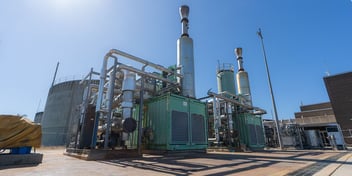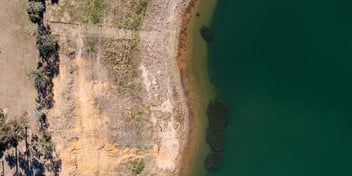Regional utility leading the way from waste to resource
Gippsland Water has been treating significant amounts of wastewater and biosolids to produce beneficial end products, creating a staggering $3 million to $6 million saving in operational costs per annum, as well as $1.5 million in generated revenue.
Presenting at Ozwater’21 on biosolids and wastewater reuse to achieve a circular economy, Gippsland Water Commercial Business Manager Simon Aquilina guided delegates through the utility’s impressive waste recovery efforts.
“Our journey to a circular economy has 12 phases. The first phase is where we receive our organic waste streams. The liquid wastes come from our wastewater treatment plants, but we also receive a large volume of solids waste, too,” he said.
“Our wastewater treatment effluent has to go through treatment processes to meet the appropriate water quality conditions. But once we’ve produced our compost and our recycled water, we have a number of reapplications.
“And the products that are produced out of this reapplication make their way back to us in some way, shape or form, and the cycle begins again.”
Gippsland Regional Agribusiness is one of the utility’s portfolios, which is a combination of mixed-farming enterprise, including livestock and cropping, as well as pine plantations.
“A lot of the products that we produce out of Gippsland Regional Agribusiness are returned back to the local community. Some of it is exported, but a lot of our grain crops go to local industry, particularly livestock,” Aquilina said.
The utility also has an Environmental Protection Authority–licenced Gippsland Regional Recycling Facility, taking up to 250,000 tonnes of waste product per year.
“Our main product out of that site is a certified compost. We produce about 60,000 tonnes of it per annum. That gets distributed around the state. We don’t have enough land to use all of it, but we have distributors that sell the product as a compost and soil conditioner,” Aquilina said.
“As part of this suite of waste streams, a big part for us is around biosolids. We can actually reuse all of the biosolids that we produce at this point in time in our operations, and we can take additional biosolids from external sources, too.”
Aquilina said green waste is a very big component, with the facility receiving approximately 100,000 tonnes of green waste per annum.
“We take this from Gippsland, but also south-east Melbourne. Contaminated soils, dairy and poultry waste, food wastes, oily waters — you name it — anything that can be broken down, we’ll take, so long as it does not pose a risk to the product we are trying to produce,” he said.
“We’ve had a number of requests from people outside of our organisation to bring in other streams of waste, but we’ve had to reject them. That’s not just because of capacity. It’s also because we have to be careful about the composition of the waste.
“It is really important for us to ensure that our operation stays sustainable; we want to be in it for the long haul, so we need to mitigate that risk. The overall process can take up to about 14 weeks, from receiving the waste to dispatching the final product.”
Aquilina said Gippsland Water’s waste-to-resource program has been very successful, but that he’d like to see more Australian utilities taking the same mindset when it comes to promoting sustainability within the communities they service.
“There is a lot that can be achieved with a little bit of water and a little bit of organic matter. I encourage all utilities to stop thinking about waste as rubbish, and start thinking about waste as a resource,” he said.


